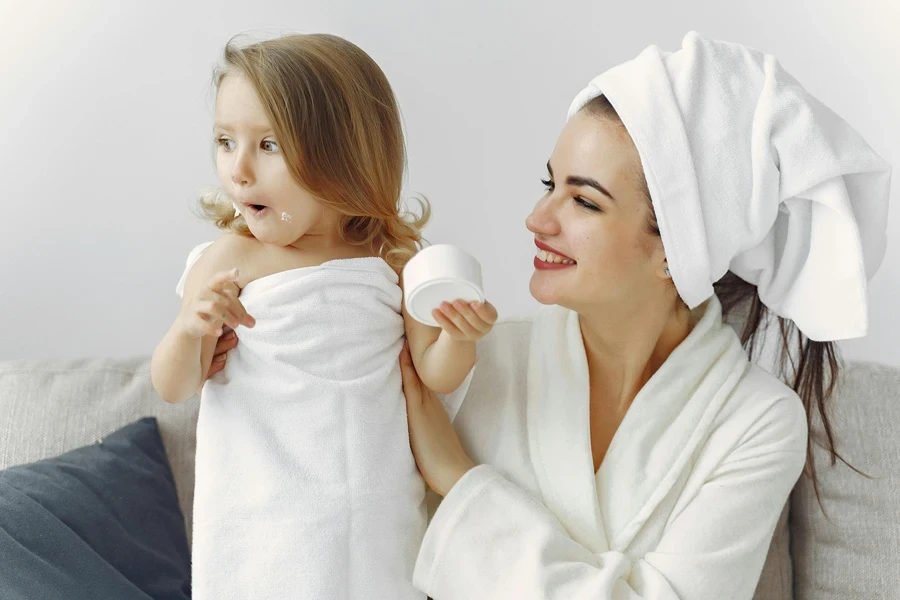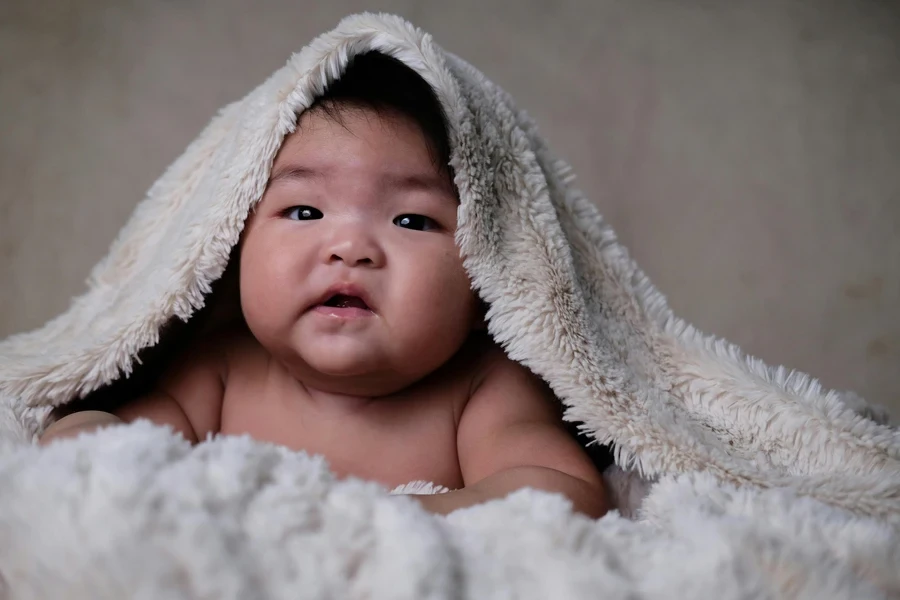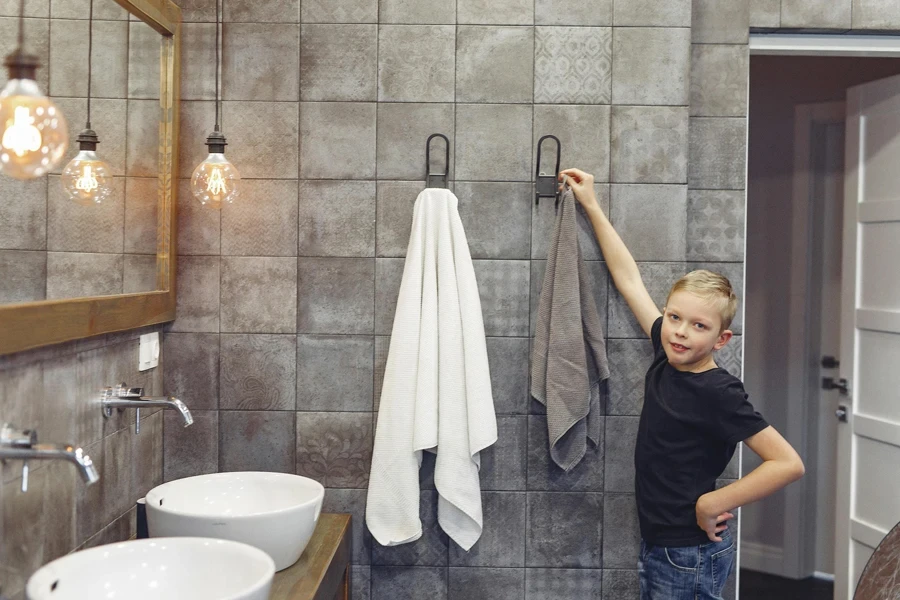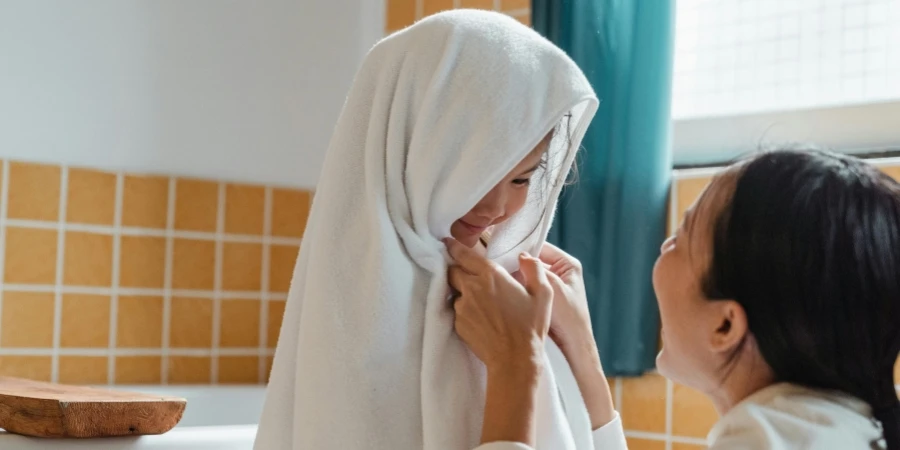Table of Contents
● Introduction
● Market overview
● Key design and material innovations
● Top sellers driving market trends
● Conclusion
Introduction
The baby and children’s bath towel market is experiencing significant growth as consumers increasingly prioritize comfort, skin safety, and sustainability. New materials such as bamboo and organic cotton are gaining traction for their softness and eco-friendly qualities, catering to the needs of sensitive skin. Market leaders are driving innovation with durable, high-performance fabrics that combine functionality with design. As demand rises for towels that offer both luxury and practicality, industry players are responding with creative solutions. This shift highlights the growing focus on quality, wellness, and environmental responsibility in the bath towel sector.

Market overview
The global kids bath towel market reached a value of $11 billion in 2023 and is expected to grow at a compound annual growth rate (CAGR) of 4.8% through 2032, according to Global Market Insights. This growth is primarily driven by the increasing demand for high-quality, luxurious towels from the hospitality sector, where hotels and resorts are prioritizing guest comfort with premium linens. Additionally, the rising focus on personal hygiene and wellness, accelerated by consumer awareness, is contributing to the expansion of the market. Health-conscious consumers are increasingly investing in towels that combine softness, absorbency, and eco-friendliness, further boosting market growth.
Cotton remains the dominant material in the bath towel market, holding about 60% of the total share due to its absorbency, softness, and widespread availability, according to Global Market Insights. However, the market is seeing a steady increase in the use of eco-friendly alternatives such as bamboo and microfiber towels, which are gaining traction for their sustainability, quick-drying properties, and hypoallergenic benefits. The demand for smaller, lightweight towels is growing, particularly in urban spaces where practicality and compact designs are highly valued. These shifts in consumer preferences are influencing market trends and product segmentation, leading to a broader range of offerings in size and material to meet diverse needs.

Key design and material innovations
Design and material innovations are at the core of the evolving baby and children’s bath towel market, with cotton continuing to hold a prominent position. Cotton and organic cotton towels are particularly favored for their softness, breathability, and high absorbency, making them ideal for delicate skin. Organic cotton has become a top choice for eco-conscious consumers as it is grown without harmful chemicals, making it safer for children and the environment. Cotton towels, especially blends of cotton and bamboo, are widely valued for their exceptional absorbency and soft texture, which contribute to a comfortable bath experience for babies.
Bamboo towels are gaining rapid popularity due to their eco-friendly, hypoallergenic, and antimicrobial properties. These towels are not only sustainable but also offer superior durability and quick-drying capabilities, making them ideal for daily use in households as well as premium markets. Bamboo towels are highly sought after because of their natural ability to resist bacterial growth, making them a healthier option for children’s sensitive skin. Additionally, the quick-drying nature of bamboo fibers makes these towels a practical solution for busy parents who need towels that can be reused frequently without the risk of mildew.
Microfiber towels are also becoming a popular choice in the children’s bath towel category, particularly for their lightweight and fast-drying properties. These towels are ideal for active families who need portable and efficient solutions, especially for use at the beach or pool. Microfiber towels offer excellent durability and absorb moisture quickly, making them convenient for travel and outdoor activities. Despite being lightweight, they still provide the necessary softness and comfort required for children’s sensitive skin.

Hooded towels and personalized designs are also significant trends in the baby and children’s bath towel market. Hooded towels offer an additional layer of warmth by covering the child’s head, which is especially important for babies who are more susceptible to losing body heat. Hooded towels provide both functionality and aesthetic appeal, combining the need for warmth with playful and engaging designs that children love. Personalized towels, often featuring a child’s name or favorite characters, further enhance the consumer experience by making bath time more fun and individualized.
With increasing attention on sustainability, there is a growing demand for towels produced with eco-friendly processes and materials. Companies are focusing on reducing their environmental impact by incorporating biodegradable fibers and adopting sustainable production practices. Towels made from organic cotton, bamboo, and other sustainable materials are becoming the go-to choice for parents who prioritize both the health of their children and the environment. These eco-conscious choices align with the broader market shift towards environmentally responsible products that do not compromise on quality or functionality.

Top sellers driving market trends
Several key players are driving innovation and shaping trends in the baby and children’s bath towel market. Welspun and Trident Group are two of the largest manufacturers in the industry, leading the way with their high-quality cotton towel production. Both companies have focused on expanding their luxury and organic cotton collections to meet the growing demand for soft, absorbent, and eco-friendly towels. These companies are making significant strides in the organic cotton segment, appealing to consumers seeking sustainable and premium bath linens. Their commitment to organic materials has positioned them as leaders in the global market, particularly in the residential and hospitality sectors.
Brooklinen and Swaas have emerged as innovators in the bamboo and organic fiber towel segment, catering to the increasing number of eco-conscious consumers. Bamboo towels are becoming highly popular due to their durability, antimicrobial properties, and environmental benefits. Brooklinen’s focus on luxury organic cotton and bamboo towels has allowed them to capture a niche market of consumers who prioritize sustainability without sacrificing quality or comfort. Similarly, Swaas has built its reputation by offering a range of bamboo-based products, tapping into the rising consumer interest in eco-friendly options that are gentle on both the skin and the planet.
1888 Mills and Loftex are also at the forefront of market trends, expanding their product lines to include towels with advanced properties such as antimicrobial treatments and quick-drying capabilities. These features are particularly important for premium market segments, where customers are willing to invest in towels that offer enhanced performance and long-term durability. These innovations respond to the demand for more hygienic and convenient solutions, particularly for active families and hospitality businesses. The emphasis on antimicrobial towels, which prevent the growth of bacteria and mildew, aligns with the growing consumer preference for wellness-oriented products.
High-profile product launches have also influenced recent trends in the market. Brands like Balenciaga have introduced luxury items such as high-end bath towel skirts, which blur the line between fashion and function, appealing to consumers who view towels as lifestyle products. According to Global Market Insights, this trend reflects a broader shift toward premium and designer bath linens that offer both utility and style. Similarly, Brooklinen’s expansion into organic cotton collections highlights the increasing consumer demand for luxury products made from sustainable materials, driving further innovation in the bath towel industry.

Conclusion
The baby and children’s bath towel market is moving toward a future dominated by sustainable and high-performance materials like bamboo and organic cotton. As leading brands continue to innovate, the industry is poised for steady growth, driven by increasing consumer demand for eco-friendly products that prioritize wellness and comfort. This shift reflects a broader focus on quality and environmental responsibility, setting the stage for continued advancements in towel design and material innovation.




